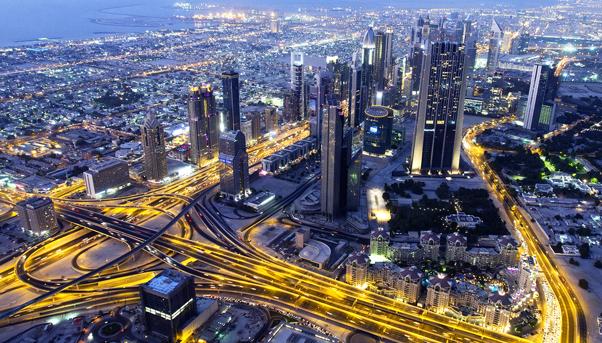
Oil and Finance, Desert and Large Works, Modernity and Luxury. The Arabian Peninsula is also this, a puzzle of different States surrounded on the northern side by the Syrian Desert, on the western side by the Red Sea, on the southern side by the Indian Ocean and on the eastern side by the Persian Gulf. In this sub-continent that divides Africa from Asia, Saudi Arabia and Yemen, Oman and the United Arab Emirates, Qatar, Bahrain and Kuwait have built their empires on mountains and mountains of “black gold”.
Wealth beyond any imaginable thought (Saudi Arabia, by itself, is the first oil producer in the world), invested to transform deserts and steppes into modern oasis, by pushing on infrastructure and large work development, attracting capital and international investors.
A result that has been obtained also thanks to the significant financial support from government funds, like the Abu Dhabi Investment Authority (the second in the world for managed capital) or the Mubadala, which have supported the economic and infrastructural growth of the territory.
During the last years, even thanks to what has been mentioned above, some States of the Peninsula, like the United Arab Emirates, have managed to become a global place capable of attracting the best and a place where history runs faster than anywhere else.
It is the same atmosphere that for many years was present in New York, a city that has always been considered to be head-on with regard to change and innovation. It is not a case that Thomas Friedman, winner of the Pulitzer Prize and a columnist of the New York Times has recently defined Dubai an «Arab Manhattan».
The economist, in one of his editorials published on the “Grey Lady” columns, defined the Emirate «a place where young Arabs that arrive from all parts of the region are able to realize all their aspirations in art, business, in the media sector, education and in technology with multinational companies, always aligned with their culture, language and religious milieu”.
Friedman’s comments reach where analysts, investment banks, global players and large consultant companies have looked for years: the Arabian Peninsula.
The Emirates, stated Burson-Marsteller in its annual report entitled “Arab Youth Survey”, published in the middle of 2014, remain for the third consecutive year the most popular country to live in, even in front of the United States. Investments, tourism, innovation and the enormous flow of money gained from selling oil transformed that which was once known as the “Pirate Bay” in a world famous business centre.
The Arabian Peninsula: an empire amid the mountains
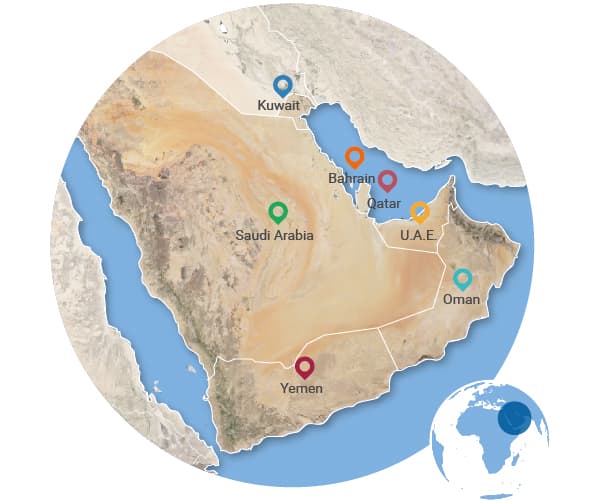
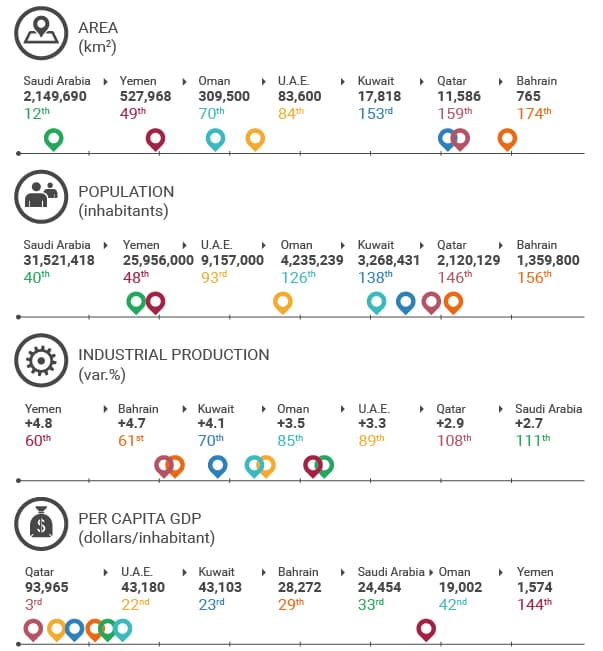
Infrastructure and Growth
The innovative metro lines of Ryadh and Doha, Dubai’s skyscrapers, the cities constructed in the desert, the airports and the artificial islands. All of this is the product of a vision, but also of enormous investments that do not seem to diminish.
Salini Impregilo in the Arabian Peninsula

According to Business Monitor International, during 2015 the construction sector in the Peninsula is destined to grow by 10%. This is due to projects like the Riyadh Metro Project composed of six metro underground lines Saudi Arabia’s capital.
During the 2012-2016 period, the total investments programmed by the Countries of the area will amount to 268 billion dollars, of which 119 are Saudi Arabias’.
Just in 2013, the provisions allocated for infrastructures in the Emirates amounted to 35 billion dollars. Abu Dhabi, in the same year, launched an 90 billion euro investment programme to spend within 2018 for the construction of houses, schools and various types of infrastructures. The path that is being walked remains that of large infrastructure works, just like the gigantic project that on December 12, 2012, brought to the inauguration of the Khalifa Port, one of the largest commercial and modern ports in the world.
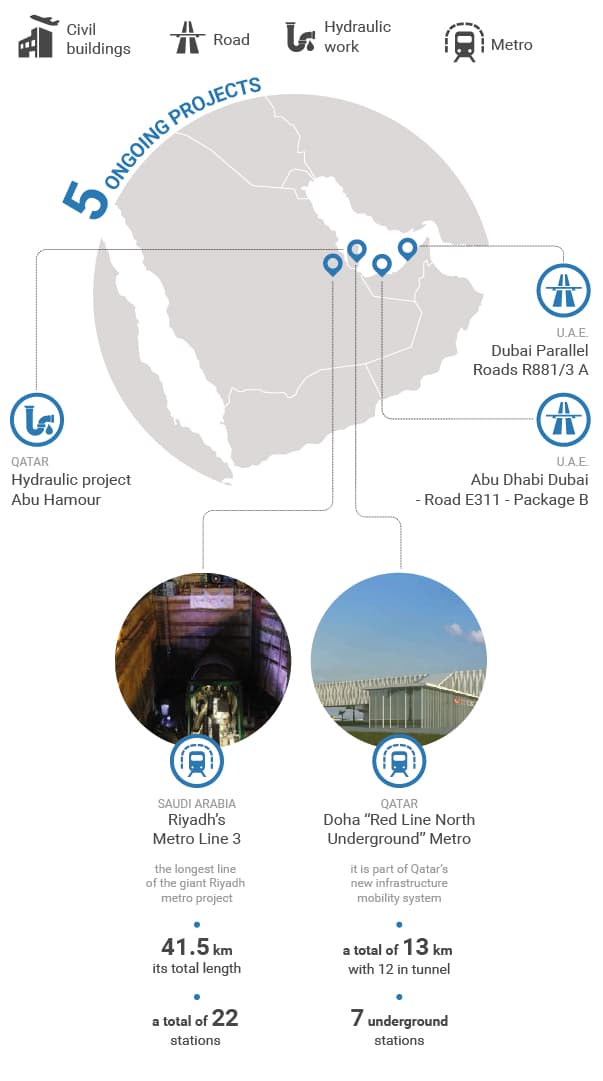
The Salini Impregilo Group carries out a key role in this ambitious project. The Group constructed some of the most important works of the region, like the Doha and Ryadh metros (technological works of excellence in the transport sector), Riyadh’s Kingdom Centre, which considered to be one of the centres that best represent Saudi Arabia’s development, Abu Dhabi’s great mosque, composed of 4 minarets and 138 domes for a total area of 84,000 m2.
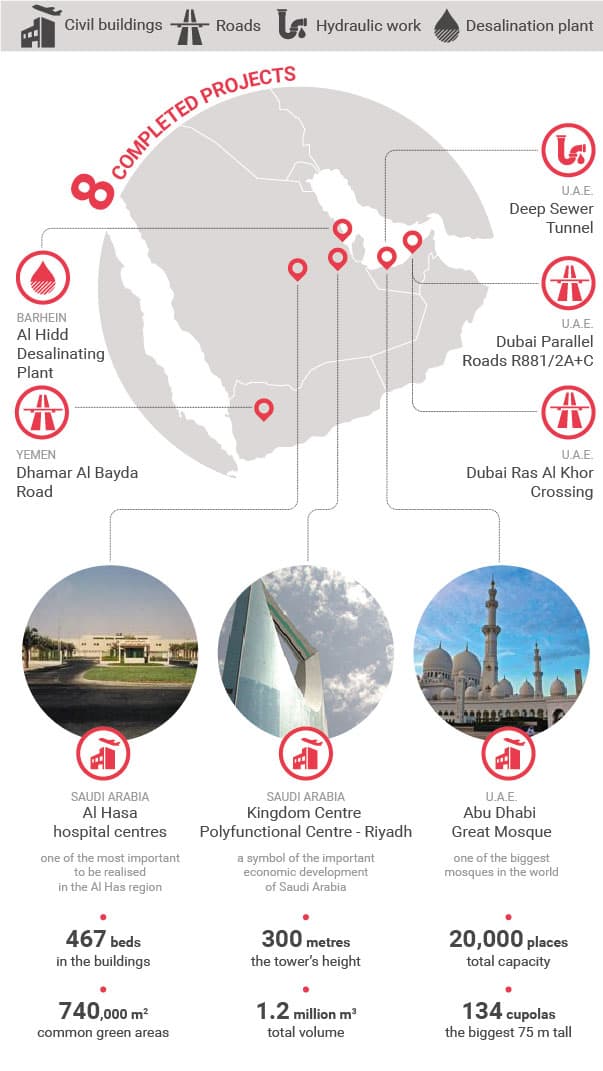
Masdar City
The last and most innovative challenge in terms of infrastructure and city planning is well represented by Masdar City (in Arab it means “source company”), a city established with the funds given by the Mubadala Development Company, Abu Dhabi’s state company and thanks to the innovative project designed by the prestigious British architectural studio owned by Foster&Partners.
The city should be the first “zero impact” city in the world. It stands immersed in the desert, on a six km2 area and uses solar energy and renewable resources.
The project started in 2006. Its residents cannot use cars and must use the exclusive innovative transportation system purposely created.
According to expectations the city’s construction, which once completed will be able to include 50,000 people, should be finalised in 2016. The total investments made amount to 22 billion dollars.
The 2020 Expo
Infrastructures, modern constructions and the capacity to attract foreign investments is what the Emirate’s growth strategy bases its strategy on. This is why the 2020 EXPO truly represents an excellent showcase and a unique occasion.
Dubai, on November 27, 2013, was chosen by the Bureau International des Expositions (Bie) to be the seat for the 67th EXPO. By beating Russia, Turkey and Brasil, Dubai won an event that, according to the forecasts made, should guarantee a 23 billion dollar economic return, against the 8.4 billion dollars that will be invested in the Emirate.
This great international kermis, which will cover 438 hectares and will be set between Dubai’s and Abu Dhabi’s airports, will be an important occasion that will demonstrate, once and for all, and to the entire world, that the future can be found among the desert’s dunes.

